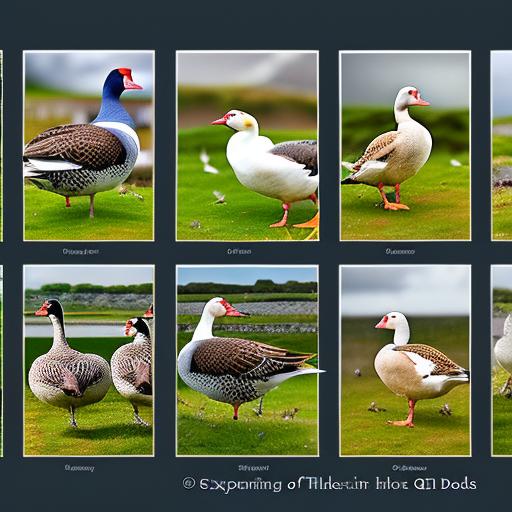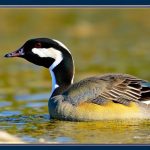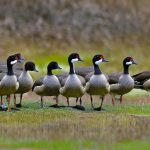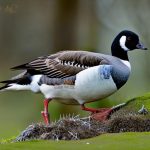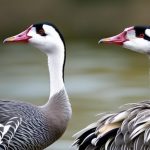Geese have been an integral part of British agriculture and culture for centuries. With their distinctive honking and graceful presence, geese have become a familiar sight in the British countryside. There are several different breeds of geese that are native to the UK, each with its own unique characteristics and features. From the majestic Toulouse to the hardy Embden, British geese breeds have played a significant role in the country’s agricultural heritage and continue to be valued for their meat, eggs, and feathers. In this article, we will explore the history, importance, and future of British geese breeds, as well as the cultural significance and conservation efforts surrounding these magnificent birds.
The History of Geese in the UK
Geese have a long and storied history in the UK, dating back to ancient times. The Romans are believed to have introduced the domesticated goose to Britain, and from there, the birds quickly became a staple of the country’s agricultural landscape. Geese were valued for their meat, eggs, and feathers, and were often kept by smallholders and farmers to provide a source of food and income. Over the centuries, different breeds of geese were developed to suit the specific needs of different regions and purposes, leading to the diverse array of British geese breeds that we see today. Despite changes in agricultural practices and the rise of industrial farming, geese have remained a beloved and important part of British agriculture, with their presence continuing to be felt in rural communities across the country.
The Importance of Geese in British Agriculture
Geese have long been valued for their contributions to British agriculture. Their meat is prized for its rich flavor and texture, and their eggs are used in a variety of culinary applications. In addition, geese are also valued for their feathers, which are used in everything from bedding to clothing. Beyond their economic value, geese also play a crucial role in the management of grassland and pasture. Their grazing habits help to control weeds and pests, and their manure provides valuable nutrients to the soil. As such, geese have become an important part of sustainable and regenerative farming practices, helping to maintain the health and productivity of the land. In recent years, there has been a renewed interest in traditional and heritage breeds of geese, as consumers and farmers alike seek out more sustainable and ethical alternatives to industrial farming practices.
The Different Varieties of British Geese Breeds
There are several different breeds of geese that are native to the UK, each with its own unique characteristics and features. Some of the most well-known British geese breeds include the Toulouse, Embden, and Sebastopol. The Toulouse is a large, heavy breed with a distinctive knob at the base of its bill, while the Embden is known for its pure white plumage and robust nature. The Sebastopol, on the other hand, is prized for its curly feathers and elegant appearance. In addition to these breeds, there are also several other varieties of geese that are native to the UK, each with its own distinct traits and qualities. From the graceful Pilgrim to the hardy Shetland, British geese breeds come in a wide range of sizes, colors, and temperaments, making them well-suited to a variety of different farming and conservation purposes.
The Characteristics and Features of Each Breed
Each breed of British geese has its own unique characteristics and features that make it well-suited to different purposes and environments. The Toulouse, for example, is known for its large size and gentle nature, making it a popular choice for meat production. The Embden, with its pure white plumage and robust build, is prized for its hardiness and adaptability to different climates. The Sebastopol, with its curly feathers and elegant appearance, is often kept for ornamental purposes. Other breeds, such as the Pilgrim and Shetland, have their own distinct traits and qualities that make them well-suited to specific farming and conservation purposes. By understanding the unique characteristics and features of each breed, farmers and conservationists can make informed decisions about which geese breeds are best suited to their specific needs and goals.
The Role of Geese in Conservation Efforts in the UK
In addition to their contributions to agriculture, geese also play a crucial role in conservation efforts in the UK. Many breeds of British geese are classified as rare or endangered, and efforts are underway to preserve and protect these valuable genetic resources. By conserving and promoting traditional and heritage breeds of geese, conservationists are helping to maintain the genetic diversity and resilience of these birds, ensuring that they continue to thrive for generations to come. In addition, geese also play a valuable role in habitat management and restoration, helping to maintain the health and biodiversity of wetlands and other important ecosystems. By understanding and appreciating the important role that geese play in conservation efforts, we can work together to ensure that these magnificent birds continue to enrich our lives and landscapes for years to come.
Geese Breeding and Rearing Practices in the UK
Breeding and rearing geese in the UK is a time-honored tradition that requires careful attention to the specific needs and behaviors of these birds. Geese are typically raised in small flocks, with access to ample pasture and water. They are hardy and adaptable birds, but they do require proper care and management to thrive. Breeding geese is a delicate process that requires careful selection of breeding stock and attention to the specific traits and characteristics of each breed. Rearing goslings also requires careful attention to their nutritional needs and socialization, as well as protection from predators and the elements. By understanding and practicing proper breeding and rearing practices, farmers and conservationists can help to ensure the health and vitality of British geese breeds for future generations.
The Cultural Significance of Geese in British Folklore and Traditions
Geese have long held a special place in British folklore and traditions, with their distinctive honking and graceful presence making them a beloved symbol of the countryside. In many rural communities, geese are celebrated in festivals and events, and are often featured in traditional folk songs and stories. Geese are also associated with a number of superstitions and beliefs, with their behavior and appearance often being interpreted as omens of good or bad fortune. In addition, geese have also been immortalized in art and literature, with their beauty and grace inspiring countless works of poetry, painting, and sculpture. By understanding and celebrating the cultural significance of geese in British folklore and traditions, we can gain a deeper appreciation for the important role that these birds have played in shaping the country’s rich and diverse cultural heritage.
The Future of British Geese Breeds
The future of British geese breeds is bright, with a growing interest in traditional and heritage breeds and a renewed focus on sustainable and ethical farming practices. As consumers and farmers alike seek out more sustainable and ethical alternatives to industrial farming practices, there has been a renewed interest in traditional and heritage breeds of geese. By supporting and promoting these valuable genetic resources, we can help to ensure the continued vitality and resilience of British geese breeds for generations to come. In addition, ongoing conservation efforts are helping to protect and preserve rare and endangered breeds of geese, ensuring that they continue to thrive in the wild and on the farm. By working together to support and promote the future of British geese breeds, we can help to ensure that these magnificent birds continue to enrich our lives and landscapes for years to come.
Celebrating the Diversity and Beauty of British Geese
In conclusion, British geese breeds have played a significant role in the country’s agricultural heritage and continue to be valued for their meat, eggs, and feathers. With their distinctive honking and graceful presence, geese have become a familiar sight in the British countryside, and their cultural significance and conservation efforts surrounding these magnificent birds. By understanding and celebrating the diversity and beauty of British geese, we can gain a deeper appreciation for the important role that these birds have played in shaping the country’s rich and diverse cultural heritage. As we look to the future, it is important to support and promote the continued vitality and resilience of British geese breeds, ensuring that they continue to thrive for generations to come. By working together to celebrate the diversity and beauty of British geese, we can help to ensure that these magnificent birds continue to enrich our lives and landscapes for years to come.
Meet Walter, the feathered-friend fanatic of Florida! Nestled in the sunshine state, Walter struts through life with his feathered companions, clucking his way to happiness. With a coop that’s fancier than a five-star hotel, he’s the Don Juan of the chicken world. When he’s not teaching his hens to do the cha-cha, you’ll find him in a heated debate with his prized rooster, Sir Clucks-a-Lot. Walter’s poultry passion is no yolk; he’s the sunny-side-up guy you never knew you needed in your flock of friends!

